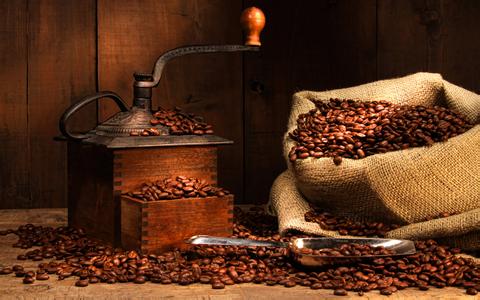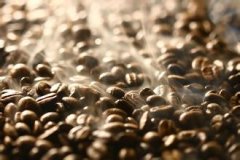Basic technology of fine coffee Grinding Technology of Coffee production

Grinding tool-- make coffee beans powder in detail
In order to blend with the water, coffee made the greatest sacrifice-to pieces. Before brewing coffee, the beans must be ground into fine grains to increase the contact area between water and coffee in order to extract the delicacy.
In fact, the bean grinder is more important than the coffee machine, and players suggest choosing a "sawtooth grinder" because it can grind a uniform coffee powder quickly and steadily.
The operation method of the sawtooth bean grinder is very simple, generally speaking, it will have two setting functions, one is to set the grinding degree, the other is to set the grinding time. The degree of grinding is mostly expressed in Arabic numerals, and the smaller the number is, the finer the grinding is.
On the top of the bean grinder is a funnel shaped box containing unground beans, and below is a drawer to hold the ground coffee powder.
When you choose to buy a bean grinder, you should pay attention to its power, usually between 70 watts and 150 watts, the higher the better, the higher the power, the faster the grinding speed, and the shorter time the coffee powder stays in the sawtooth, so it can grind the coffee powder at low temperature.
More and more coffee players are fond of roasting their own coffee beans, because usually after the coffee beans are roasted, they can only keep their freshness for 1 to 7 days, and then they will begin to stale, leaving only bitterness and no mellow taste. Therefore, self-baking can ensure the freshness of coffee beans. They describe this feeling as frying a plate of fresh vegetables or steaming a fresh fish, which tastes better than the dishes at a banquet and can add a lot of interest.
The traditional roaster is drum-type, which has the characteristics of stewing, which will make the coffee beans more mature and full-bodied. The household drum roaster can bake half a pound of coffee beans at a time, and the baking time (including cooling and producing beans) takes about 210.25 minutes. If you want to roast deeply, you only need to increase the time. When in use, just put in the raw beans, set the baking degree, press the start button, from baking to cooling, the roaster can do it automatically, and all you have to do is slowly enjoy the coffee beans jumping up and down happily in the roaster.
Important Notice :
前街咖啡 FrontStreet Coffee has moved to new addredd:
FrontStreet Coffee Address: 315,Donghua East Road,GuangZhou
Tel:020 38364473
- Prev

Drinking coffee is good for gingival health.
The researchers found that coffee intake reduced tooth and bone loss, and they said drinking coffee at least in adult men showed an effect that might help keep gums healthy. The study was conducted by scientists at the Henry M. Goldman Sachs School of Dentistry at Boston University in the United States. Their data came from 1 of the U.S. Department of Veterans Affairs Dental Longitudinal Research Program.
- Next

Boutique coffee bean knowledge what is the secret processing of coffee beans?
Honey treatment is a kind of treatment which is between the sun treatment and water washing. It keeps the coffee clean, and although the brightness decreases, it increases the sweetness and caramel flavor of the coffee. The appearance of honey-treated beans has a distinct sticky layer. But the honey treatment method is very dependent on the local climate, the weather must be dry and adequate sunshine, otherwise it is not suitable for honey treatment. Honey treatment
Related
- Beginners will see the "Coffee pull flower" guide!
- What is the difference between ice blog purified milk and ordinary milk coffee?
- Why is the Philippines the largest producer of crops in Liberia?
- For coffee extraction, should the fine powder be retained?
- How does extracted espresso fill pressed powder? How much strength does it take to press the powder?
- How to make jasmine cold extract coffee? Is the jasmine + latte good?
- Will this little toy really make the coffee taste better? How does Lily Drip affect coffee extraction?
- Will the action of slapping the filter cup also affect coffee extraction?
- What's the difference between powder-to-water ratio and powder-to-liquid ratio?
- What is the Ethiopian local species? What does it have to do with Heirloom native species?

